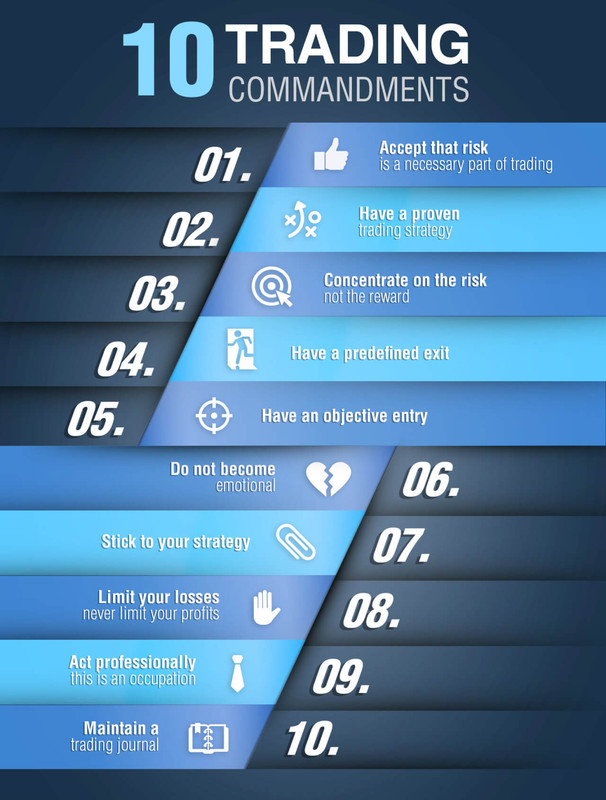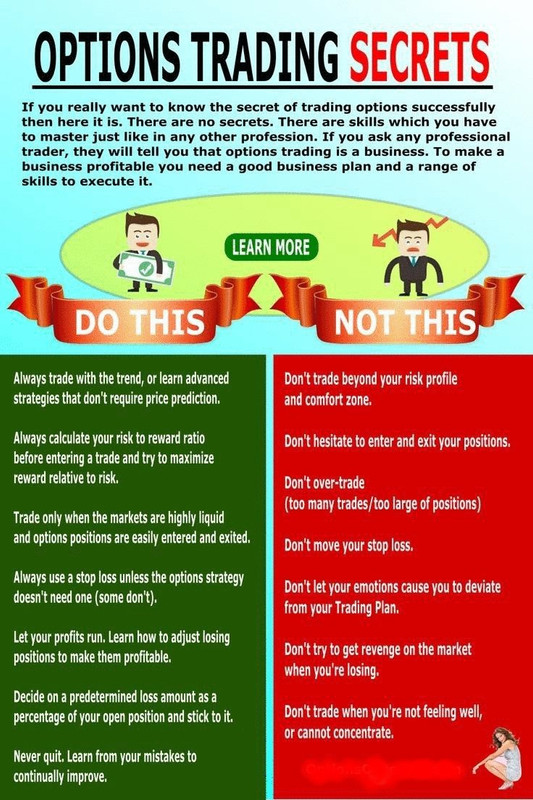To be successful in trading, one needs to understand the importance of and adhere to a set of tried-and-true rules that have guided all types of traders, with a variety of trading account sizes.
Each rule alone is important, but when they work together the effects are strong.
Trading with these rules can greatly increase the odds of succeeding in the markets.
1) Always Use a Trading Plan
A trading plan is a written set of rules that specifies a trader's entry, exit and money management criteria. Using a trading plan allows traders to do this, although it is a time-consuming endeavor.
With today's technology, it is easy to test a trading idea before risking real money. Known as backtesting, this practice applies trading ideas to historical data, allows traders to determine if a trading plan is viable, and also shows the expectancy of the plan's logic. Once a plan has been developed and backtesting shows good results, the plan can be used in real trading. The key here is to stick to the plan. Taking trades outside of the trading plan, even if they turn out to be winners, is considered poor trading and destroys any expectancy the plan may have had.
2) Treat Trading Like a Business
In order to be successful, one must approach trading as a full- or part-time business - not as a hobby or a job. As a hobby, where no real commitment to learning is made, trading can be very expensive. As a job, it can be frustrating since there is no regular paycheck. Trading is a business and incurs expenses, losses, taxes, uncertainty, stress, and risk. As a trader, you are essentially a small business owner and must do your research and strategize to maximize your business's potential.
3) Use Technology to Your Advantage
Trading is a competitive business, and it's safe to assume the person sitting on the other side of a trade is taking full advantage of technology. Charting platforms allow traders an infinite variety of methods for viewing and analyzing the markets. Backtesting an idea on historical data prior to risking any cash can save a trading account, not to mention stress and frustration. Getting market updates with smartphones allows us to monitor trades virtually anywhere. Even technology that today we take for granted, like high-speed internet connections, can greatly increase trading performance.
Using technology to your advantage, and keeping current with available technological advances, can be fun and rewarding in trading.
4) Protect Your Trading Capital
Saving money to fund a trading account can take a long time and much effort. It can be even more difficult (or impossible) the next time around. It is important to note that protecting your trading capital is not synonymous with not having any losing trades. All traders have losing trades; that is part of the business. Protecting capital entails not taking any unnecessary risks and doing everything you can to preserve your trading business.
5) Become a Student of the Markets
Think of it as continuing education - traders need to remain focused on learning more each day. Since many concepts carry prerequisite knowledge, it is important to remember that understanding the markets, and all of their intricacies, is an ongoing, lifelong process.
Hard research allows traders to learn the facts, like what the different economic reports mean. Focus and observation allow traders to gain instinct and learn the nuances; this is what helps traders understand how those economic reports affect the market they are trading.
World politics, events, economies - even the weather - all have an impact on the markets. The market environment is dynamic. The more traders understand the past and current markets, the better prepared they will be to face the future.
6) Risk Only What You Can Afford to Lose
Rule 4 mentions that funding a trading account can be a long process. Before a trader begins using real cash, it is imperative that all of the money in the account be truly expendable. If it's not, the trader should keep saving until it is.
It should go without saying that the money in a trading account should not be allocated for the kids' college tuition or paying the mortgage. Traders must never allow themselves to think they are simply "borrowing" money from these other important obligations. One must be prepared to lose all the money allocated to a trading account.
Losing money is traumatic enough; it is even more so if it is capital that should have never been risked, to begin with.
7) Develop a Trading Methodology Based on Facts
Taking the time to develop a sound trading methodology is worth the effort. It may be tempting to believe in the "so easy it's like printing money" trading scams that are prevalent on the internet. But facts, not emotions or hope, should be the inspiration behind developing a trading plan.
Traders who are not in a hurry to learn typically have an easier time sifting through all of the information available on the internet. Consider this: if you were to start a new career, more than likely you would need to study at a college or university for at least a year or two before you were qualified to even apply for a position in the new field. Expect that learning how to trade demands at least the same amount of time and factually driven research and study.
8) Always Use a Stop Loss
A stop loss is a predetermined amount of risk that a trader is willing to accept with each trade. The stop loss can be either a dollar amount or percentage, but either way it limits the trader's exposure during a trade. Using a stop loss can take some of the emotion out of trading since we know that we will only lose X amount on any given trade.
Ignoring a stop loss, even if it leads to a winning trade, is bad practice. Exiting with a stop loss, and thereby having a losing trade, is still good trading if it falls within the trading plan's rules. While the preference is to exit all trades with a profit, it is not realistic. Using a protective stop loss helps ensure that our losses and our risk are limited.
9) Know When to Stop Trading
There are two reasons to stop trading: an ineffective trading plan, and an ineffective trader.
An ineffective trading plan shows much greater losses than anticipated in historical testing. Markets may have changed, volatility within a certain trading instrument may have lessened, or the trading plan simply is not performing as well as expected. One will benefit from remaining unemotional and business like. It might be time to re-evaluate the trading plan and make a few changes or to start over with a new trading plan. An unsuccessful trading plan is a problem that needs to be solved. It is not necessarily the end of the trading business.
An ineffective trader is one who is unable to follow his or her trading plan. External stressors, poor habits and lack of physical activity can all contribute to this problem. A trader who is not in peak condition for trading should consider a break to deal with any personal problems, be it health or stress or anything else that prohibits the trader from being effective. After any difficulties and challenges have been dealt with, the trader can resume.
10) Keep Trading in Perspective
It is important to stay focused on the big picture when trading. A losing trade should not surprise us - it is a part of trading. Likewise, a winning trade is just one step along the path to profitable trading. It is the cumulative profits that make a difference. Once a trader accepts wins and losses as part of the business, emotions will have less of an effect on trading performance. That is not to say that we cannot be excited about a particularly fruitful trade, but we must keep in mind that a losing trade is not far off.
Setting realistic goals is an essential part of keeping trading in perspective. If a trader has a small trading account, he or she should not expect to pull in huge returns. A 10% return on a $10,000 account is quite different than a 10% return on a $1,000,000 trading account. Work with what you have, and remain sensible.
In Summary
Understanding the importance of each of these trading rules, and how they work together, can help traders establish a viable trading business. Trading is hard work, and traders who have the discipline and patience to follow these rules can increase their odds of success in a very competitive arena.
Jean Folger can be contacted at PowerZoneTrading
Last edited by a moderator:


